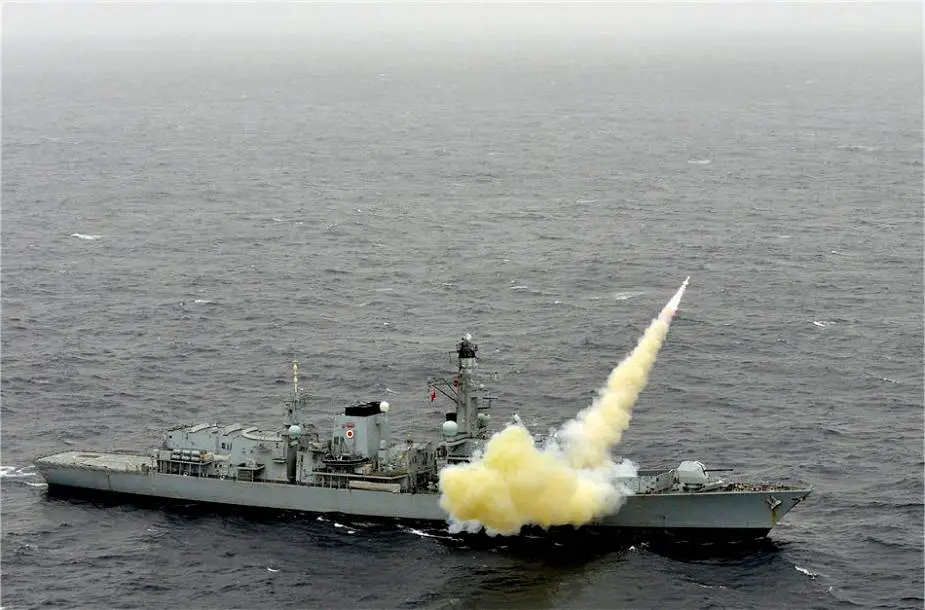According to a press release published on January 7, 2021, Babcock International, the Aerospace and Defence Company, is pleased to announce a further year contract extension has been agreed to continue in-service support to the Harpoon Missile System for the British Royal Navy.
Follow Navy Recognition on Google News at this link
 British Royal Navy warship HMS Montrose has flexed her warfighting muscle with the successful firing of a Harpoon missile - capable of destroying a target up to 80 miles away. (Picture source British Navy)
British Royal Navy warship HMS Montrose has flexed her warfighting muscle with the successful firing of a Harpoon missile - capable of destroying a target up to 80 miles away. (Picture source British Navy)
Babcock provides specialist air, defense and missiles engineering expertise supporting the availability of the Harpoon Missile System fitted to Type 23 Frigates and Type 45 Destroyers. Its role in the program covers operational defect support, post design services and the procurement of spares, enabling maintenance of the system and its operational availability to the fleet.
Martin Laity, Director of Mission Systems, Babcock said: « We are pleased to continue supporting the Harpoon program, ensuring asset availability for our customer. This is a vital piece of anti-ship equipment on board both the Type 23 and Type 45 that enables them to operate safely wherever they are deployed. »
The Harpoon is one of the most popular anti-ship missile that was developed and manufactured by McDonnell Douglas, now Boeing Defense, Space & Security. It features autonomous, all-weather, over-the-horizon capability and can execute both land-strike and anti-ship missions. The 225 kg blast warhead delivers lethal firepower against a wide variety of land-based targets, including coastal defense sites, surface-to-air missile sites, exposed aircraft, port or industrial facilities and ships in port.
The enhanced version, Harpoon Block II provides accurate long-range guidance for land and ship targets by incorporating the low-cost inertial measuring unit from the Boeing Joint Direct Attack Munition (JDAM) program and the software, mission computer, integrated Global Positioning System/Inertial Navigation System, GPS antenna and receiver from the Standoff Land Attack Missile Expanded Response (SLAM ER).
The multi-mission Block II is deployable from all current Harpoon missile system platforms with either existing command and launch equipment or the commercially available Advanced Harpoon Weapon Control System (AHWCS).
Boeing has delivered more than 7,300 Harpoon and Harpoon Block II missiles for the U.S. Navy and more than 30 international military customers since the inaugural Harpoon contract was awarded by Naval Air Systems Command on June 21, 1971. More than 600 ships, 180 submarines, 12 different types of aircraft, and several land-based launch vehicles carry Harpoon missiles.



